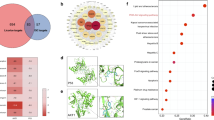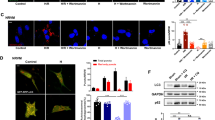Abstract
Yessotoxins (YTX) and azaspiracids (AZAs) are marine toxins produced by phytoplanktonic dinoflagellates that get accumulated in filter feeding shellfish and finally reach human consumers through the food web. Both toxin classes are worldwide distributed, and food safety authorities have regulated their content in shellfish in many countries. Recently, YTXs and AZAs have been described as compounds with subacute cardiotoxic potential in rats owed to alterations of the cardiovascular function and ultrastructural heart damage. These molecules are also well known in vitro inducers of cell death. The aim of this study was to explore the presence of cardiomyocyte death after repeated subacute exposure of rats to AZA-1 and YTX for 15 days. Because autophagy and apoptosis are often found in dying cardiomyocytes, several autophagic and apoptotic markers were determined by western blot in heart tissues of these rats. The results showed that hearts from YTX-treated rats presented increased levels of the autophagic markers microtubule-associated protein light chain 3-II (LC3-II) and beclin-1, nevertheless AZA-1-treated hearts evidenced increased levels of the apoptosis markers cleaved caspase-3 and -8, cleaved PARP and Fas ligand. Therefore, while YTX-induced damage to the heart triggers autophagic processes, apoptosis activation occurs in the case of AZA-1. For the first time, activation of cell death signals in cardiomyocytes is demonstrated for these toxins with in vivo experiments, which may be related to alterations of the cardiovascular function.





Similar content being viewed by others
References
Alfonso A, de la Rosa L, Vieytes MR, Yasumoto T, Botana LM (2003) Yessotoxin, a novel phycotoxin, activates phosphodiesterase activity. Effect of yessotoxin on cAMP levels in human lymphocytes. Biochem Pharmacol 65(2):193–208
Alfonso A, Roman Y, Vieytes MR et al (2005) Azaspiracid-4 inhibits Ca2+ entry by stored operated channels in human T lymphocytes. Biochem Pharmacol 69(11):1627–1636
Bishopric NH, Andreka P, Slepak T, Webster KA (2001) Molecular mechanisms of apoptosis in the cardiac myocyte. Curr Opin Pharmacol 1(2):141–150
Buja LM, Vela D (2008) Cardiomyocyte death and renewal in the normal and diseased heart. Cardiovasc Pathol 17(6):349–374
de la Rosa LA, Alfonso A, Vilarino N, Vieytes MR, Botana LM (2001) Modulation of cytosolic calcium levels of human lymphocytes by yessotoxin, a novel marine phycotoxin. Biochem Pharmacol 61(7):827–833
Dhesi P, Tehrani F, Fuess J, Schwarz ER (2010) How does the heart (not) die? The role of autophagy in cardiomyocyte homeostasis and cell death. Heart Fail Rev 15(1):15–21
Elmore S (2007) Apoptosis: a review of programmed cell death. Toxicol Pathol 35(4):495–516
European Comission Regulation (2004) (EC) No. 853/2004 of the European Parliament and of the Council of 29 April 2004 laying down specific hygiene rules for food animal origin. Off J Eur Commun Annex III, Sect VIII, Chap V, 2. L 226:60–61
Fernandez-Araujo A, Tobio A, Alfonso A, Botana LM (2014) Role of AKAP 149-PKA-PDE4A complex in cell survival and cell differentiation processes. Int J Biochem Cell Biol 53C:89–101
Fernandez-Araujo A, Alfonso A, Vieytes M, Botana L (2015) Key role of phosphodiesterase 4A (PDE4A) in autophagy triggered by yessotoxin. Toxicology 329:60–72
Ferreiro SF, Vilariño N, Carrera C et al (2014a) In vivo arrhythmogenicity of the marine biotoxin azaspiracid-2 in rats. Arch Toxicol 88(2):425–434
Ferreiro SF, Vilariño N, Louzao MC, Nicolaou KC, Frederick MO, Botana LM (2014b) In vitro chronic effects on hERG channel caused by the marine biotoxin azaspiracid-2. Toxicon 91:69–75
Ferreiro SF, Vilarino N, Carrera C et al (2016a) Subacute cardiotoxicity of yessotoxin. In vitro and in vivo studies. Chem Res Toxicol 29(6):981–990
Ferreiro SF, Vilarino N, Carrera C et al (2016b) Subacute cardiovascular toxicity of the marine phycotoxin azaspiracid-1 in rats. Toxicol Sci 151(1):104–114
Furey A, O’Doherty S, O’Callaghan K, Lehane M, James KJ (2010) Azaspiracid poisoning (AZP) toxins in shellfish: toxicological and health considerations. Toxicon 56(2):173–190
Gurusamy N, Das DK (2009) Autophagy, redox signaling, and ventricular remodeling. Antioxid Redox Signal 11(8):1975–1988
Gustafsson AB, Gottlieb RA (2008) Recycle or die: the role of autophagy in cardioprotection. J Mol Cell Cardiol 44(4):654–661
James KJ, Fidalgo Saez MJ, Furey A, Lehane M (2004) Azaspiracid poisoning, the food-borne illness associated with shellfish consumption. Food Addit Contam 21(9):879–892
Jung CH, Ro SH, Cao J, Otto NM, Kim DH (2010) mTOR regulation of autophagy. FEBS Lett 584(7):1287–1295
Kemp CD, Conte JV (2012) The pathophysiology of heart failure. Cardiovasc Pathol 21(5):365–371
Kolattukudy PE, Niu J (2012) Inflammation, endoplasmic reticulum stress, autophagy, and the monocyte chemoattractant protein-1/CCR2 pathway. Circ Res 110(1):174–189
Korsnes MS (2012) Yessotoxin as a tool to study induction of multiple cell death pathways. Toxins (Basel) 4(7):568–579
Korsnes MS, Hetland DL, Espenes A, Aune T (2006) Induction of apoptosis by YTX in myoblast cell lines via mitochondrial signalling transduction pathway. Toxicol In Vitro 20(8):1419–1426
Korsnes MS, Hetland DL, Espenes A, Aune T (2007) Cleavage of tensin during cytoskeleton disruption in YTX-induced apoptosis. Toxicol In Vitro 21(1):9–15
Lee Y, Gustafsson AB (2009) Role of apoptosis in cardiovascular disease. Apoptosis 14(4):536–548
Manning BD, Cantley LC (2007) AKT/PKB signaling: navigating downstream. Cell 129(7):1261–1274
MCMahon T, Silke J (1996) Winter toxicity of unknown aetiology in mussels. Harmful Algae 14:2
Miyamoto S, Rubio M, Sussman MA (2009) Nuclear and mitochondrial signalling Akts in cardiomyocytes. Cardiovasc Res 82(2):272–285
Moulin M, Piquereau J, Mateo P et al (2015) Sexual dimorphism of doxorubicin-mediated cardiotoxicity: potential role of energy metabolism remodeling. Circ Heart Fail 8(1):98–108
Munday R, Aune T, Rossini GP (2008) Toxicology of the yessotoxins. In: Botana LM (ed) Seafood and freshwater toxins pharmacology. CRC Press Boca Ratón, Physiol Detect, pp 329–339
Murata M, Shimatani M, Sugitani H, Oshima Y, Yasumoto T (1987) Isolation and structural elucidation of the causative toxin of the diarrhetic shellfish poisoning. Bull Jpn Soc Sci Fish 48:549–552
Nishida K, Otsu K (2008) Cell death in heart failure. Circ J 72(Suppl A):A17-21
Petrovski G, Das S, Juhasz B, Kertesz A, Tosaki A, Das DK (2011) Cardioprotection by endoplasmic reticulum stress-induced autophagy. Antioxid Redox Signal 14(11):2191–2200
Reinartz M, Raupach A, Kaisers W, Godecke A (2014) AKT1 and AKT2 induce distinct phosphorylation patterns in HL-1 cardiac myocytes. J Proteome Res 13(10):4232–4245
Ronzitti G, Callegari F, Malaguti C, Rossini GP (2004) Selective disruption of the E-cadherin-catenin system by an algal toxin. Br J Cancer 90(5):1100–1107
Rubiolo JA, Lopez-Alonso H, Martinez P et al (2014) Yessotoxin induces ER-stress followed by autophagic cell death in glioma cells mediated by mTOR and BNIP3. Cell Signal 26(2):419–432
Satake M, Ofuji K, Naoki H et al (1998) Azaspiracid, a new marine toxin having unique spiro ring assemblies, isolated from Irish mussels, Mytilus edulis. J Am Chem Soc 120(38):9967–9968
Takemura G, Kanoh M, Minatoguchi S, Fujiwara H (2013) Cardiomyocyte apoptosis in the failing heart—a critical review from definition and classification of cell death. Int J Cardiol 167(6):2373–2386
Terao K, Ito E, Oarada M, Murata M, Yasumoto T (1990) Histopathological studies on experimental marine toxin poisoning—5. The effects in mice of yessotoxin isolated from Patinopecten yessoensis and of a desulfated derivative. Toxicon 28(9):1095–1104
Tillmann U, Elbrächter M, Krock B, John U, Cembella A (2009) Azadinium spinosum gen. et sp. nov. (Dinophyceae) identified as a primary producer of azaspiracid toxins. Eur J Phycol 44(1):63–79
Toker A, Marmiroli S (2014) Signaling specificity in the Akt pathway in biology and disease. Adv Biol Regul 55:28–38
Tubaro A, Dell’ovo V, Sosa S, Florio C (2010) Yessotoxins: a toxicological overview. Toxicon 56(2):163–172
Twiner MJ, Doucette GJ, Rasky A, Huang XP, Roth BL, Sanguinetti MC (2012a) Marine algal toxin azaspiracid is an open-state blocker of HERG potassium channels. Chem Res Toxicol 25(9):1975–1984
Twiner MJ, Hanagriff JC, Butler S, Madhkoor AK, Doucette GJ (2012b) Induction of apoptosis pathways in several cell lines following exposure to the marine algal toxin azaspiracid. Chem Res Toxicol 25(7):1493–1501
Vilariño N, Nicolaou KC, Frederick MO et al (2006) Cell growth inhibition and actin cytoskeleton disorganization induced by azaspiracid-1 structure-activity studies. Chem Res Toxicol 19(11):1459–1466
Vilariño N, Nicolaou KC, Frederick MO et al (2008) Azaspiracid substituent at C1 is relevant to in vitro toxicity. Chem Res Toxicol 21(9):1823–1831
Wesselborg S, Stork B (2015) Autophagy signal transduction by ATG proteins: from hierarchies to networks. Cell Mol Life Sci 72(24):4721–4757
Acknowledgments
The research leading to these results has received funding from the following FEDER cofunded grants. From CDTI and Technological Funds, supported by Ministerio de Economía y Competitividad, AGL2012-40185-CO2-01, AGL2014-58210-R, and Consellería de Cultura, Educación e Ordenación Universitaria, GRC2013-016. From CDTI under ISIP Programme, Spain, IDI-20130304 APTAFOOD. From the European Union’s Seventh Framework Programme managed by REA—Research Executive Agency (FP7/2007-2013) under grant agreement 312184 PHARMASEA.
Author information
Authors and Affiliations
Corresponding authors
Electronic supplementary material
Below is the link to the electronic supplementary material.
Rights and permissions
About this article
Cite this article
Ferreiro, S.F., Vilariño, N., Carrera, C. et al. In vivo cardiomyocyte response to YTX- and AZA-1-induced damage: autophagy versus apoptosis. Arch Toxicol 91, 1859–1870 (2017). https://doi.org/10.1007/s00204-016-1862-0
Received:
Accepted:
Published:
Issue Date:
DOI: https://doi.org/10.1007/s00204-016-1862-0




